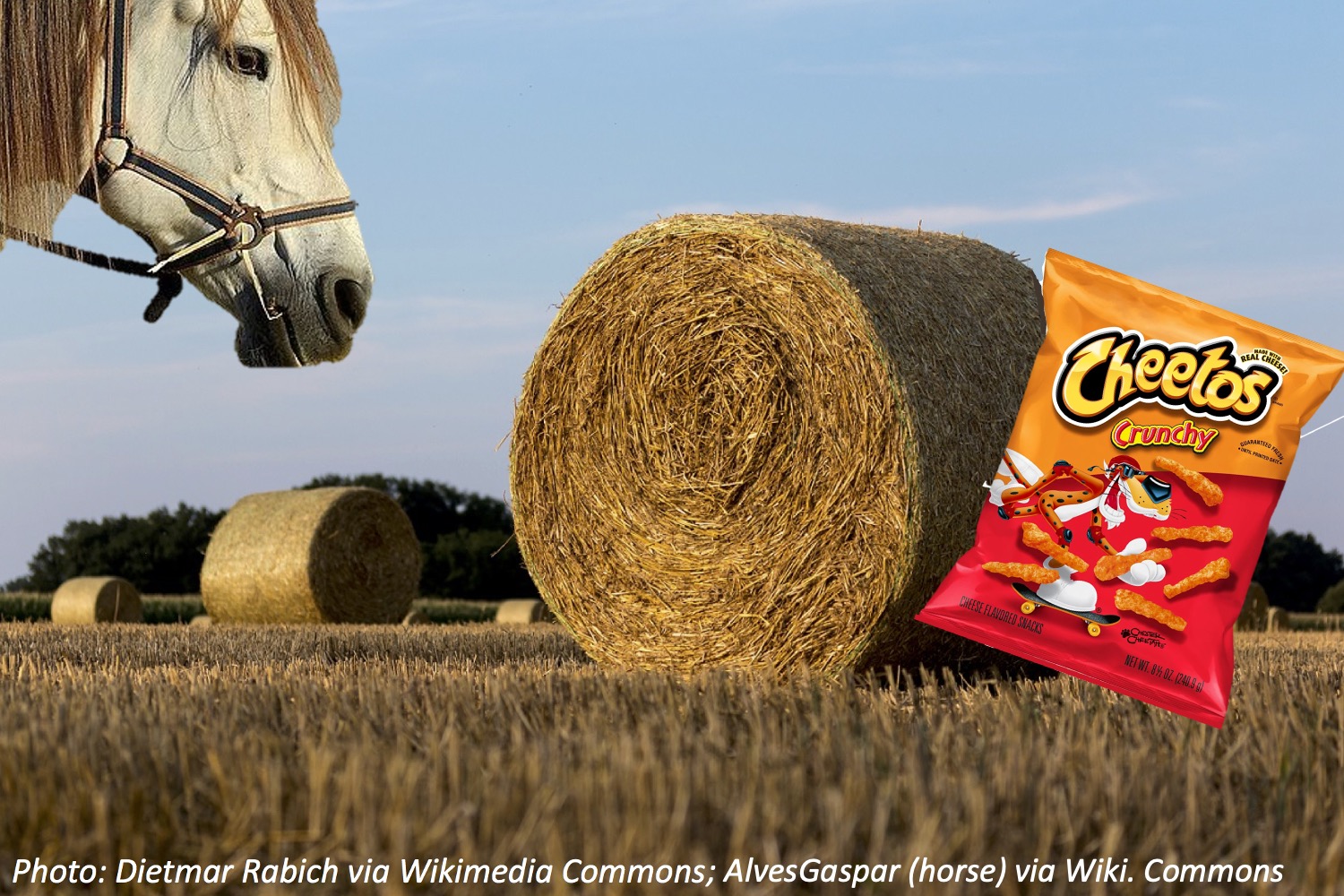What are those giant rolls? They’re bales of straw. Farm animals like horses and cows sleep on straw. Horses also need lots of hay, since they eat about 20 pounds of it each day. That might be a quarter or a third of what you weigh! By the way, what’s the difference between hay and straw? Hay is alfalfa or grass, while straw is dried-out, leftover wheat stalks. Just like you don’t want to eat your pillow, horses don’t want to eat straw!
Wee ones: What shape does the front of a bale look like?
Little kids: What 3-D shape is the whole bale? Bonus: How many bales can you count in the field? Which one do you think is closest to the camera?
Big kids: Square bales of hay weighs 50 pounds. If each horse eats 20 pounds, how many horses can you feed enough food with 1 bale? Bonus: How many bales do you need to be able to feed an exact number of horses?
The sky’s the limit: If you make a bale with twice as wide a circle (but the same length), it will hold 4 times as much hay. If it’s 3 times as wide, it will hold 9 times as much hay. How many times as much hay would a bale 4 times as wide hold?
Answers:
Wee ones: A circle.
Little kids: A cylinder — the same shape as a can of food. Bonus: We think we see parts of 10 bales. The one that looks biggest is the closest.
Big kids: Just 2 horses. Bonus: 2 bales. That will give you 100 pounds, which can feed 5 horses.
The sky’s the limit: 16 times as much hay. Circles work like squares: if it’s 2 times as wide in every direction, it will cover 2 x 2 the area, or 4 times the area. So a circle (or square) 4 times as big in every direction will hold 4 x 4 as much area. If the height of the cylinder is the same, you’re stacking the same number of 1-foot tall layers; it’s just that they’re each 16 times as big. So you get 16 times the volume (space that the bale fills).



